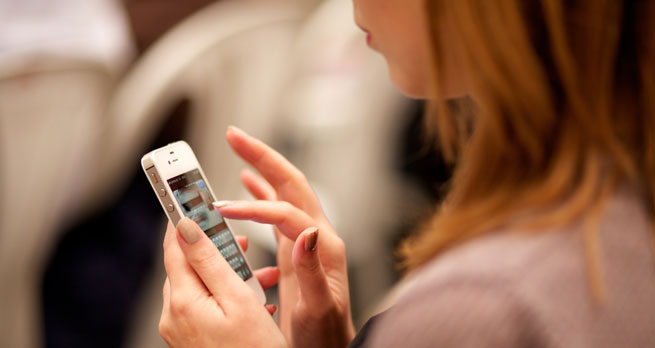The unmet need for mental health services is reaching an unprecedented level thanks to rising demand and continually falling NHS resources. Monthly referrals to community mental health teams increased by 13% in 2013, and 16% in the case of crisis services. Yet more than 200 full-time NHS mental health doctors and 3,600 nursing positions have been lost over the same period.
As so many of us now have access to and rely on smartphones, one increasingly popular solution to this problem is the use of apps to provide automated forms of mental health treatment. Apps are relatively inexpensive, widely available and, unlike traditional NHS mental health services, can be used by more than one person at any specific time. Some apps, such as Big White Wall, offer a community support service with access to trained healthcare professionals at any time of the day. Others provide automated cognitive behavioural therapy(CBT) and methods for mood tracking or self-reflection.

Only a half of people have a choice about when they receive conventional mental health therapy and just 13% can choose where. Using mental health apps would allow people to access a form of treatment on their terms and could even extend therapy to people who are currently unable to engage with it. This could include the teenager who is too anxious or stigmatised to discuss his condition face-to-face, the armed forces serviceman who needs anonymity, or the single mother who struggles to schedule an appointment around her childcare and work commitments.
No hard evidence
The reality is that there is a large gap between the theoretical benefits of mental health apps and what they are likely to deliver in practice. Of the 27 mental health apps endorsed and recommended through the NHS health apps library, 14 are designed to treat or manage the symptoms of depression and anxiety. They are frequently described as helping users to do things like control stress, improve well-being and beat depression.
Yet only four of these apps currently provide any hard evidence of results reported by real-world users. And just two make use of NHS-accredited ways of measuring the effectiveness of mental health treatments, such as the Generalised Anxiety Disorder 7 questionnaire. This leaves a question over the effectiveness of the remaining 12 out of 14 (85%) of NHS-accredited mental health apps.
In 2013, there were 1,536 depression-related apps available for download but just 32 published research articles studying their effectiveness. This pattern of high availability and a low evidence base can also be seen in apps for treating bipolar disorder, bulimia nervosa and post-traumatic stress disorder (PTSD).
But the real problem is with the apps that come with a seal of approval from a world-leading healthcare system. Accreditation by the NHS gives apps an appearance of quality, and the reputation and legitimacy of an app correlates with how many people are likely to download it.
Three in ten people with an untreated mental health issue choose to pay for private treatments, and apps that have yet to demonstrate any measurable benefits are a potential waste of their money. But they could also compound levels of anxiety in those with the greatest need and the least access to effective NHS-led mental health services. Unsuccessful attempts to resolve any mental health issues are only likely to make sufferers feel that no solution is possible.
The NHS usually provides a regulatory framework that is second to none, and winning over its guidance body, NICE, is usually seen as a major hurdle for developers of new medical products. Unfortunately, it seems as though the same level of evidence-based decision making has not been applied to the apps that the NHS has been recommending to mental health patients.
Luckily, it would appear that this subject is now being taken more seriously. As of October 16, the NHS health apps library will officially cease to exist and the organisation is looking for new ways to assess and regulate such products. A framework to help app developers understand what level of clinical quality and evidence they need to reach would be highly beneficial.
Spotting the good ones
In the meantime, there are some clear signs of quality that users can look out for to ensure mental health apps do not do more harm than good. Firstly, apps that are supported by a mental-health practitioner are on average more than twice as effective as those developed without professional expertise.
While the NHS itself may not have enforced such rigour, well-established regulatory bodies such as NICE and the US Food and Drug Administration can help highlight apps that offer real solutions. It is also worth checking how much information the app developers provide about their products. Is there any proof that their claims of “beating depression” are anything more than marketing?
Finally, it is worth remembering that some mental health apps are designed with clinical quality and effectiveness in mind and provide real support to their users. For example, Big White Wall boasts a recovery rate of 58%, better than the 44% recorded by the NHS’s flagship initiative to increase access to traditional mental health therapies over the same period.. So apps can improve people’s mental health, at a low cost and from the comfort of their own home, but only if done properly.![]()
This article was originally published on The Conversation. Read the original article.

Rate and Review
Rate this article
Review this article
Log into OpenLearn to leave reviews and join in the conversation.
Article reviews